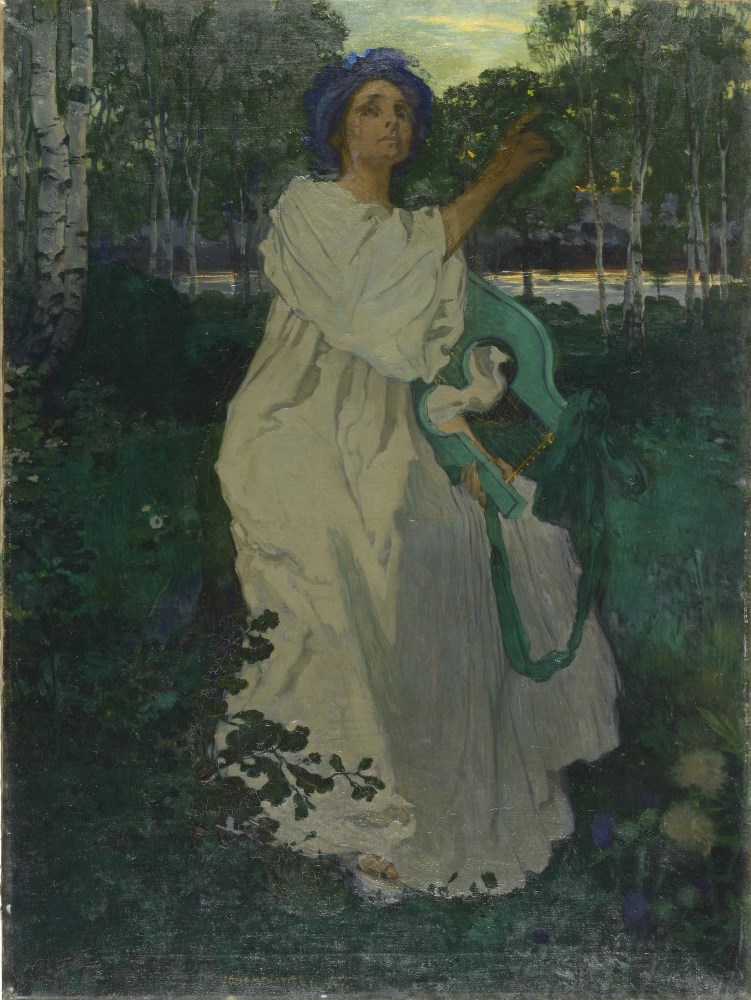Description:
Joseph Mehoffer (1869-1946) in 1887 simultaneously undertook studies at the Krakow Academy of Fine Arts and at the Faculty of Law at the Jagiellonian University, then continued his studies in Vienna. Thanks to the scholarship he received in March 1891, he went to Paris, where he studied at the local universities. He shared his workshop with Stanisław Wyspiański, with whom he implemented joint projects and also confronted projects for the same competitions. The artist’s great success was winning the competition for stained glass windows for the collegiate church in Freiburg in 1895. His projects gave him international fame. Mehoffer was a member of artistic organizations both in Poland and abroad. He exhibited his works in the country and in Europe. In 1900, he was appointed a lecturer in painting at the Academy of Fine Arts in Krakow, later obtaining the position of ordinary professor. He was rector of this university in 1914-1918 and 1932-1933. In his work he dealt with both monumental and easel painting, but also with graphics and design of scenery and interiors. He is referred to as one of the most important artists of the Young Poland period.
Description of the painting:
The Muses, as those who inspired the artists, themselves became the subjects of their representations. But who were they really? The Muses were the nine daughters of Zeus and Mnemosyne and were subject to the rule of Apollo, the god of poetry and music. Each of them had a particular field of art under their care. Thus: Calliope was the muse of heroic song, holding a ruler and writing tablet; the attribute of Clio was a scroll of parchment, as she was the guardian of history; Euterpe, playing the flute, was the patroness of lyricism; Thalia, as the patroness of comedy, presented a comic mask; Melpomene, the muse of tragedy, had a sad mask; Terpsichore, the guardian of dance, held a lyre in her hand; love songs were under the care of Erato, whose attribute was a small lyre; Polyhymnia dressed in an ancient costume for worship, as she was the guardian of hymn and song writers; and the last of the muses was Urania, who, as the patroness of astronomy, held an astral globe in her hands.
In Rogalińska Gallery of Paintings, the theme of music appears several times, including in Józef Mehoffer’s painting Muza. The artist created two almost identical compositions. He himself wrote about this representation: “It is a kind of Saphon or music – a little classical, a little Slavic, with a lyre in her hand and a wreath of daisies on her head, against a birch grove and the Vistula, which I took without changing anything from my landscape of Niepołomice”. The above description refers to the first representation, which the artist himself referred to more positively than the second, which was created in 1987 and is now in the National Museum in Warsaw. The first version was also presented at the inaugural exhibition “Sztuki” and later in Vienna.
In Muza, the influence of French art on Mehoffer’s work is evident through the presented idea and mood. In French poetic symbolism, mythical themes were considered timeless and still relevant.


